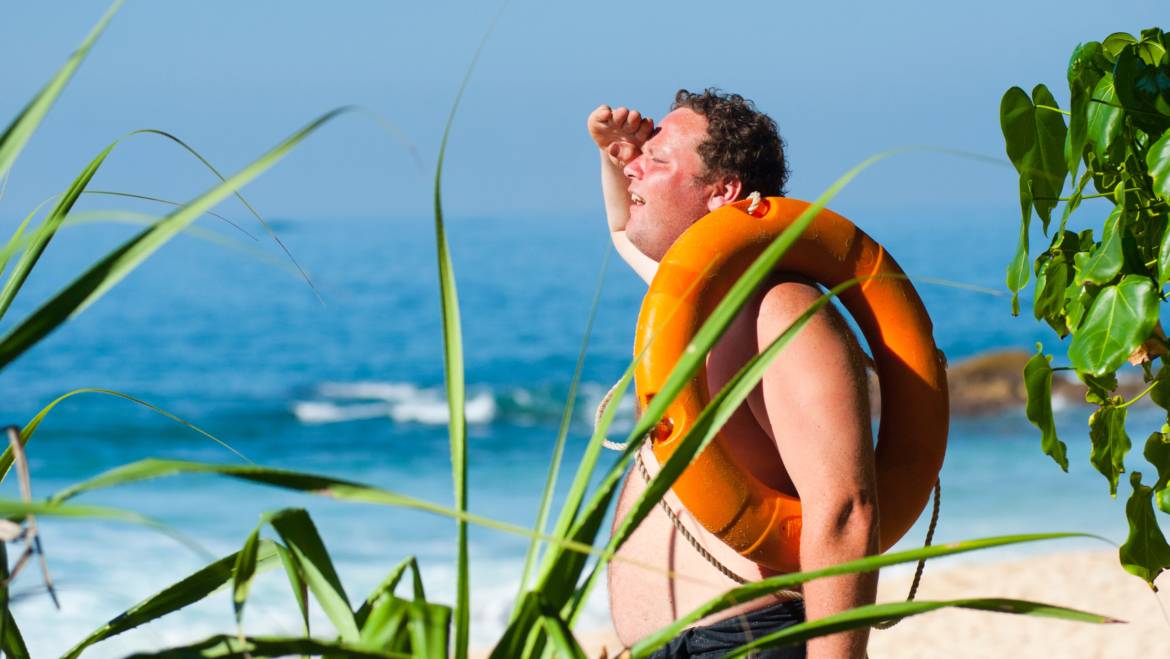Now that we’re headed into summer, it seems appropriate to consider some of the maladies that affect many if not most of us during this season of the year. And maybe we can clear up some of the confusion that surrounds these issues.
First – tick bites. We’re starting to see patients with complaints of having been bitten by these pesky arachnids. The questions that invariably arise are:
“How do I remove the tick?”
“Will I get Lyme disease?”
“What about Rocky Mountain Spotted Fever?”
“Should I bring the tick to the office for you to look at?”
The correct answers are: carefully, no, maybe, and don’t bother.
The key to removing a tick is to do so slowly, grasping the critter with tweezers (Without squeezing too hard. Some experts feel that this might cause more secretions to be deposited in the bite.) and gently pull him out, making sure that all the mouth parts are attached. Usually you can see two pinchers. Scrub the wound with some alcohol, and watch the site for 2-3 days, looking for increasing redness and swelling.
Lyme disease is a real concern, but not around here. The ticks in this area don’t carry the bug, and the cases we have seen involve people who have recently traveled to the northeast.
Rocky Mountain Spotted Fever is another story. We do see cases in this area, with the initial symptoms being GI complaints, headaches, and low grade fever. By the time the rash appears, you’re in pretty big trouble. The CDC has a great website if you’re interested in learning stuff that will probably bother you.
Now, let’s talk about sun exposure. I’ve always contended that young cigarette smokers might be persuaded to stop smoking if only they could spend a day or two with me in the ER, taking care of those unfortunate individuals among us who are dying with emphysema. The same might be true if our “sun worshippers” could spend a morning in the office of a dermatologist. Pretty scary stuff. But alas, we are only human, and most of us learn things the hard way. Common sense is not really common after all. So here are some guidelines to consider:
You only get about 3 significant sunburns before you are at risk for skin cancers. It doesn’t happen over night, but it happens. Some of my best friends are now enjoying “being whittled on” every few months, with basal cell and squamous cell cancers regularly popping up on sun exposed areas of their bodies. These are easily treated if caught reasonably early. That’s not the case for melanoma. If you want to really lose some sleep, check this disease out on the CDC website. Start early using sunscreen, and make it a habit. This needs to be done all year long, but especially in the spring and summer. And if your skin is starting to wear out and become leathery, it’s not too late to prevent continued damage. Use sunscreen.
If you think that tanning beds are safe, you need to think again. You’re exposed to the same wavelengths of light that the sun produces, causing the same cancers. Only in this setting, body parts that are usually protected are placed at risk. (They won’t be mentioned here.) Try explaining that to your Sunday School teacher.
I guess the main point here is that all of us should equate any significant sun exposure with “prunes,” and not with “pretty.”
And finally, and few important points about poison ivy. Most of us (70+%) are allergic to this widely dispersed plant. Specifically, it’s a chemical that the leaves, stem, and roots contain, called urushiol, that causes the rash, oozing, and itching. Some people are so allergic that it can be life threatening.
The first rule here is avoidance. Sometimes though, exposure can’t be helped, especially in winter when the easily recognizable foliage is not present.
After exposure, it only takes a day or so before the rash appears. Depending on the severity of the exposure and your individual susceptibility, we may see you in the clinic for relief. Should that happen, here are some things to remember:
- the most effective treatment is usually oral and topical cortisone
- the oral form (usually prednisone) works just as fast as a shot, is much cheaper, and causes no pain
- the typical course for poison ivy is 7-10 days, hence the need for longer cortisone treatment (usually 7 days)
- after you have thoroughly bathed, any oozing that developments will not spread the rash
- after bathing, you can’t spread poison ivy from person to person
- the earlier you start treatment, the better
There, that’s enough for today.


Add Comment